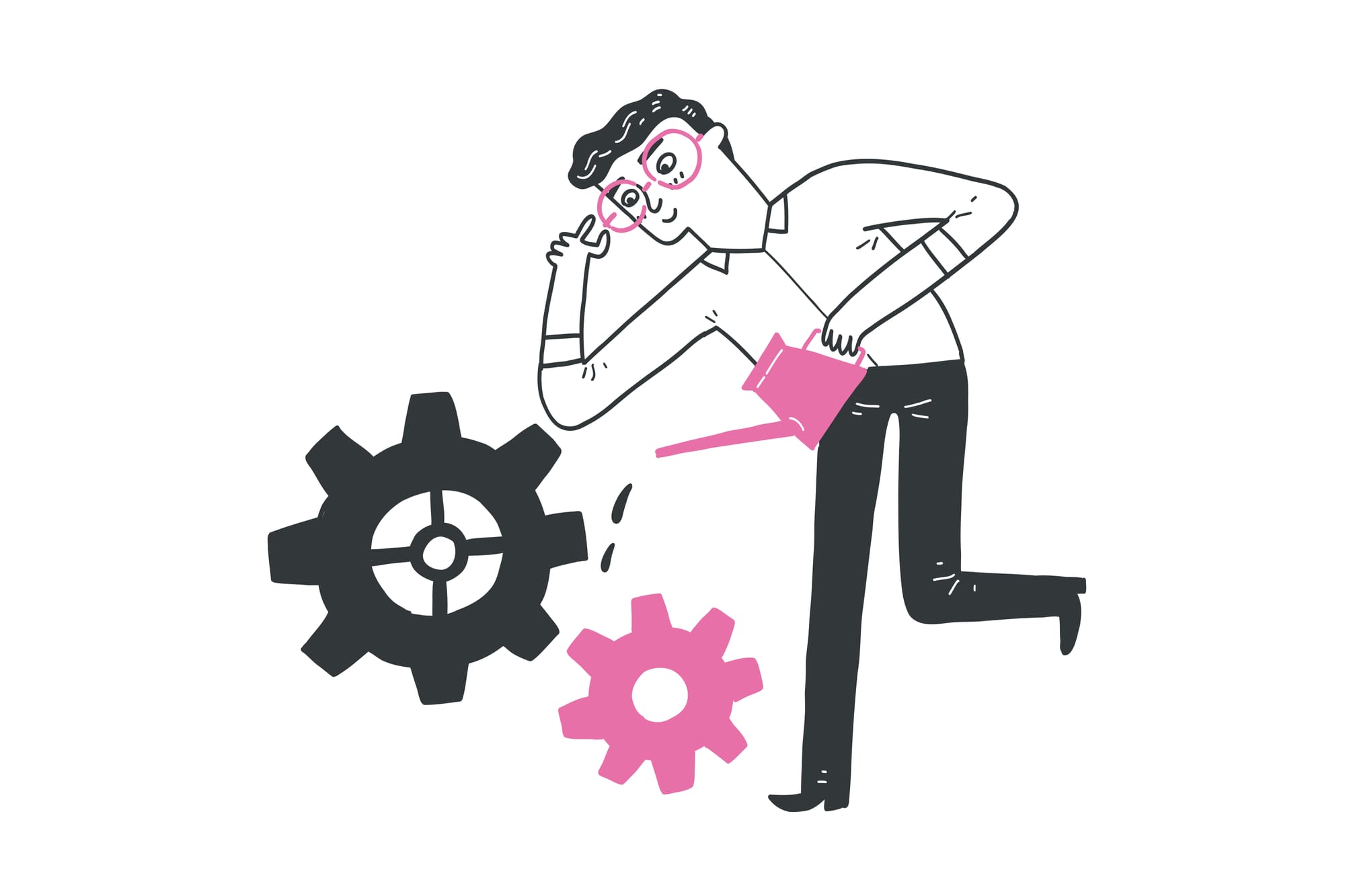Developer Experience has emerged in recent years as a way to holistically explore how technology is built. Most importantly, it places developers at the center by examining their needs, perceptions, and feelings in the context of software development.
By "context," I mean every aspect of a developer's ecosystem. This includes systems, processes, the work environment (both psychological and physical), culture, workflows, organization, team health, and tools that contribute to productivity, happiness, and overall operational excellence.
In this article, I will explore my definition of Developer Experience (DX), focusing on how Work Output, Wellbeing, and Teamwork empower developers to create outstanding products using the tools that they love in an environment that supports and challenges them.
Read more: Understanding Developer Experience (DX, DevEx): A Comprehensive Guide
What Does "Good" Developer Experience Mean Anyway?
Developer Experience has become an important trend in software engineering in recent years, but what makes it so crucial, and what exactly constitutes a "good" Developer Experience?
According to Matthew Cobby, a good Developer Experience focuses on "what teams need to achieve high software delivery performance." This involves using tools and APIs that enable the creation of secure, high-quality software with exceptional user experiences for end-users. However, an effective DX goes beyond just technical tools; it also entails a thorough understanding of the real-life challenges, practical scenarios, and personal factors that influence developers' daily tasks.
Work Output: The Foundation of Productivity
Work output includes both the quality and quantity of code that adds business value, as well as contextual contributions that facilitate code development. This encompasses not only direct code writing but also activities such as documentation, code reviews, problem-solving, mentoring, and even brainstorming.
While engineering managers may at times overutilize metrics to make critical decisions about an individual's performance, a DX-centered approach values productivity on the periphery, the meaningful contributions each developer makes towards the project's objectives. Some of these contributions are not always easy to quantify.
For example, some team members, while they might not seem “productive,” play important roles in that their presence, expertise, and support significantly boost the overall productivity of others. These individuals are the unsung heroes of successful engineering teams, and their contributions can't be quantified through traditional individual metrics. In many cases, they are tech leads, EMs, or seniors, whose leverage lies more in their relationships with the teams than in the code itself.
Similarly, some team members might not churn out numerous features but carry out other important non-coding work either as diligent testers, refiners of the codebase, or designers of the architecture or database. This, in turn, allows their colleagues to efficiently and smoothly develop features. Their impact on the team's collective efficiency is undeniable and invaluable.
A tool that takes work output seriously should be contextual yet developer-centric. It should help engineering managers monitor the health and progress of their teams with a punchcard that offers clear, in-depth views of developers' work patterns. This goes beyond standard GitHub analytics, allowing engineering managers to analyze coding habits and trends that could be eliminated or encouraged. And where contributions aren’t so easy to pin down, communication tools and feedback loops help collect and analyze data, enabling valuable insights to be gathered and then discussed.
Wellbeing: The Core of Sustainable Development
According to a report by Haystack, a staggering 88% of developers experience burnout. Similarly, findings from the Stack Overflow Developer Survey indicate that 15% of the 65,000 developers surveyed suffer from mental health issues, although a portion of them are unaware of their condition. These statistics highlight significant challenges within the tech community, emphasizing the need for increased awareness and resources to address mental health, wellbeing, and burnout among developers.
For us at HAY, wellbeing should be the central pillar of any Developer Experience model, as it recognizes that overworked and stressed developers cannot perform their best work if the physical, mental, and emotional aspects are not taken care of.
Prioritizing wellbeing involves creating a supportive work environment that encourages work-life balance, continuous learning, and open communication about challenges and needs. Initiatives like flexible working hours, mental health days, and access to wellness resources can make a substantial difference in preventing burnout and keeping motivation high. When developers feel valued and supported, they're more likely to be engaged and committed to their work.
Throughout our research, we've found that one of the most effective methods for checking on happiness and satisfaction is through the use of pulse surveys. We do know that developers are not always eager to share their feelings. That's why, along with pulse survey data, it's also important to build trust around the process by addressing wellbeing issues through one-on-one meetings.
Overall, we found that pulse surveys offer a real-time view of your team's health and productivity, integrating job satisfaction with teamwork and code quality for a comprehensive snapshot of how things are looking. The discussions as a result are meant to identify potential areas for improvement and create actionable strategies that enhance team health, happiness, and satisfaction.
Teamwork: The Catalyst for Collective Success
A dev team is more than just a group of coders working in silos; it's a complex organism made up of many networks where each member's contributions are often dependent on others' contributions.
When one small change is made by one developer, it can be felt throughout the pipeline and affect others working on a task that ensures the entire system remains whole and intact. The collaborative nature of this work means that teamwork is a vital component of Developer Experience.
Healthy teamwork occurs when engineers can freely exchange ideas about practices, leading to a clearer understanding, enhanced processes, the identification of obstacles, and the revelation of new perspectives.
Feedback is one aspect that is essential to teamwork. Gathering meaningful feedback—in the moment as well as summary feedback—allows you to have a bird's-eye view of your work, which makes it easier to see improvements across timeframes. If engineering managers can quickly access a high volume of reliable responses, they can swiftly act on issues that may be slowing down production or affecting morale.
HAY’s Developer Experience Platform
HAY’s DX platform was designed to address developer challenges and improve the developer’s ecosystem by implementing good organizational habits centered around Work Output, Wellbeing, and Teamwork.
A contextual analysis of coding patterns, shortened feedback loops, note-taking, 1:1 meetings, performance reviews, and knowledge sharing not only improve code quality and productivity but also reduce burnout, boost happiness, and strengthen collaboration among team members.
As the tech industry evolves, companies that prioritize a holistic experience for their developers will reap significant benefits, attracting and retaining top talent in the field.





